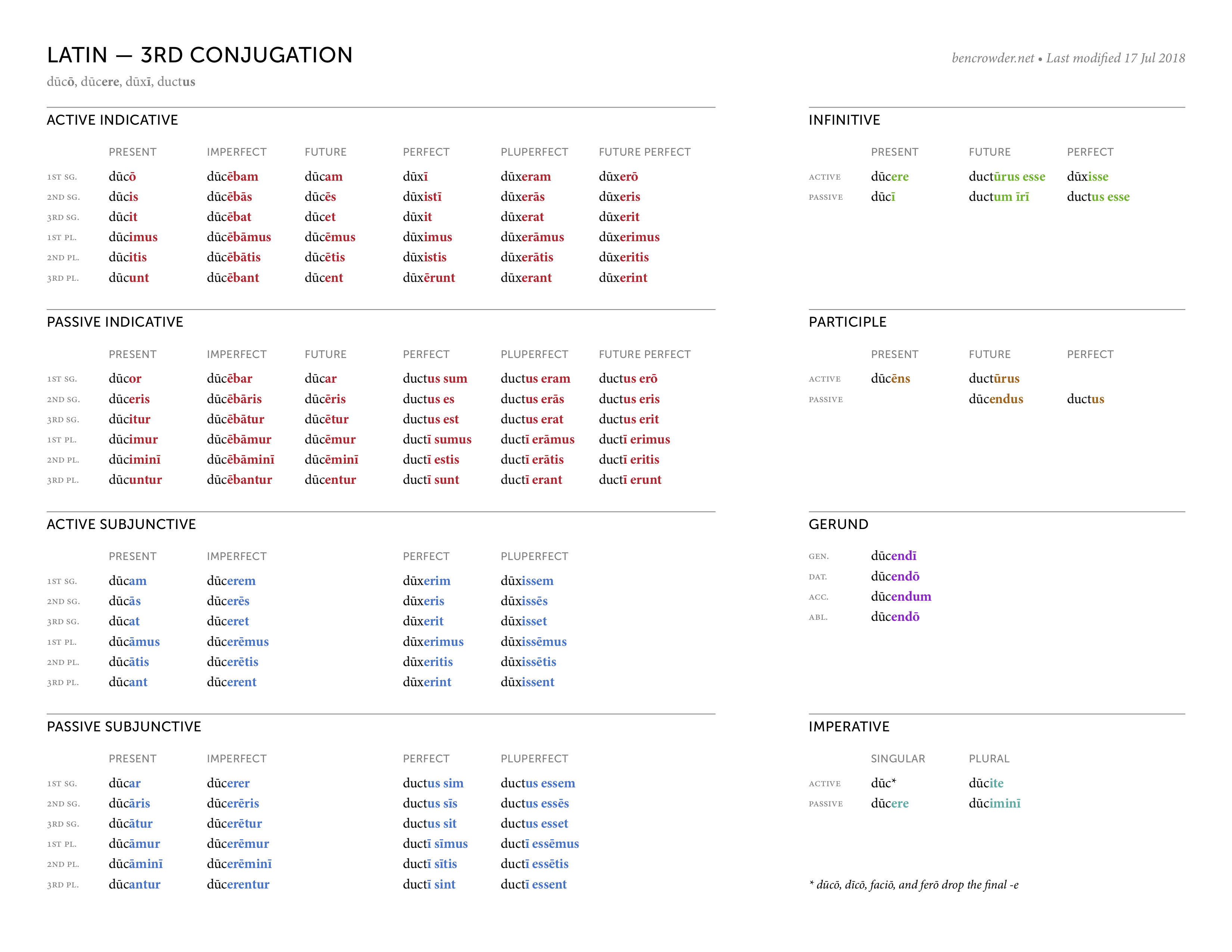How To Conjugate Latin Verbs
The first form is Iacio, and since that ends in -io, it is a third -io conjugation verb. Custodire ends in -ire, so it is a fourth conjugation verb. The Active Indicative Present. It is now time to reveal the most basic of the Latin verb forms: The Active Indicative Present of first and second conjugation verbs.


To conjugate a verb in English means to correlate the different forms of the verb with the various points of view of the subject. The points of view are first, second, and third person singular and first, second, and third person plural.

The Latin word sum is perhaps among the best known of all the Latin verbs and it is among the hardest to learn.Sum is the present indicative tense of the verb esse, meaning "to be."As with many other living and dead languages, esse is one of the oldest verb forms in Latin, one of the most frequently used of the verbs, one of the most irregular verbs in Latin and related languages.


Thus all those Latin verbs which have 1st singular -ō, 2nd singular -ās, and infinitive -āre are said to belong to the 1st conjugation, those with 1st singular -eō, 2nd singular -ēs and infinitive -ēre belong to the 2nd conjugation, and so on. The number of conjugations of regular verbs is usually said to be four.
To conjugate a verb in English means to correlate the different forms of the verb with the various points of view of the subject. The points of view are first, second, and third person singular and first, second, and third person plural.
The Latin language was the language of the Roman Empire. Verbix shows the verb inflections of the Classic Latin (CL). Verbix shows the verb inflections of the …
Learn how to conjugate Latin verbs properly by taking a different approach. slide 1 of 4 Many native English speakers find Latin difficult to learn because Latin is much more an inflected language, meaning that the endings of words change to indicate their use in a sentence.
The Latin 1st conjugation verbs, like the Latin 1st declension nouns, are marked by an "a" as in amare. Noting this "a" (a thematic vowel) should help you to distinguish verbs of the first conjugation from those of the second, third, or fourth conjugations.
This vowel will appear in all formations of the present tense of 1st and 2nd conjugation verbs. Exception : in the 1st person singular form of 1st conjugation verbs, the ā is overwhelmed by the o and gets assimilated into it.
5. Third -io verbs: Some 3rd conjugation verbs end in -io in the 1st pers. sing., present tense. They show -iunt in the 3rd pers. pl., present tense.The -i- also appears throughout the imperfect and the future tenses. The perfect tenses are regular, formed from the stem of the third principal part.


